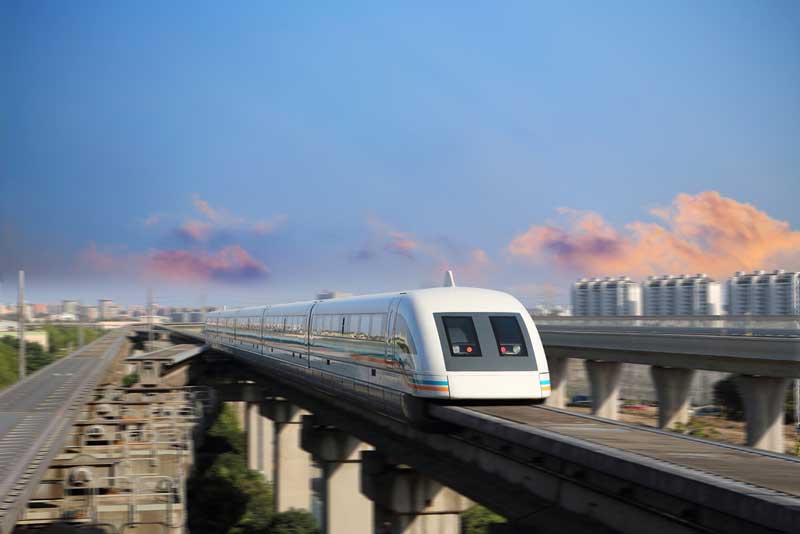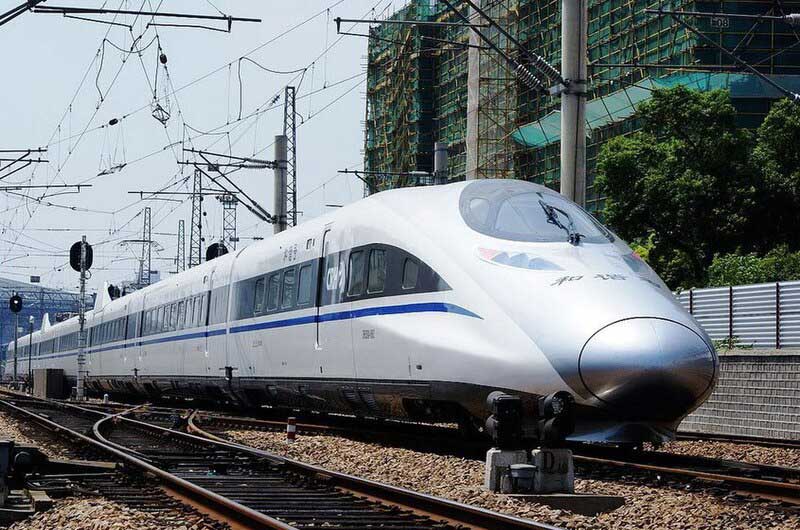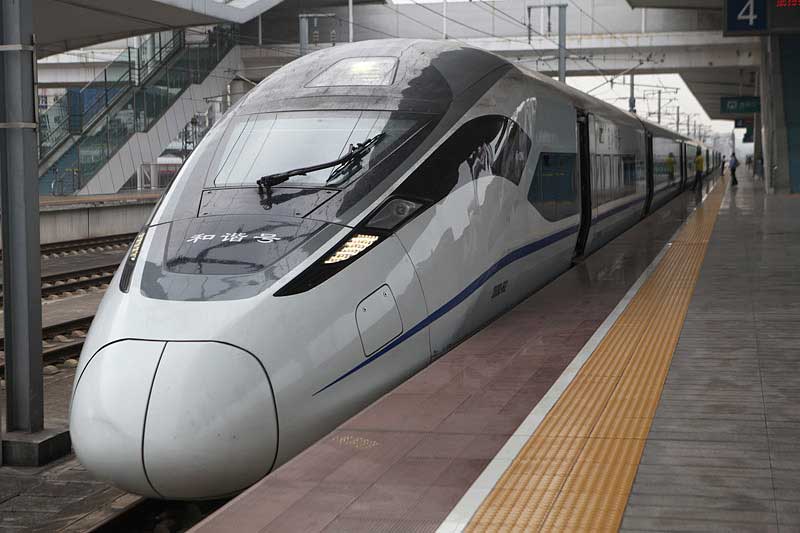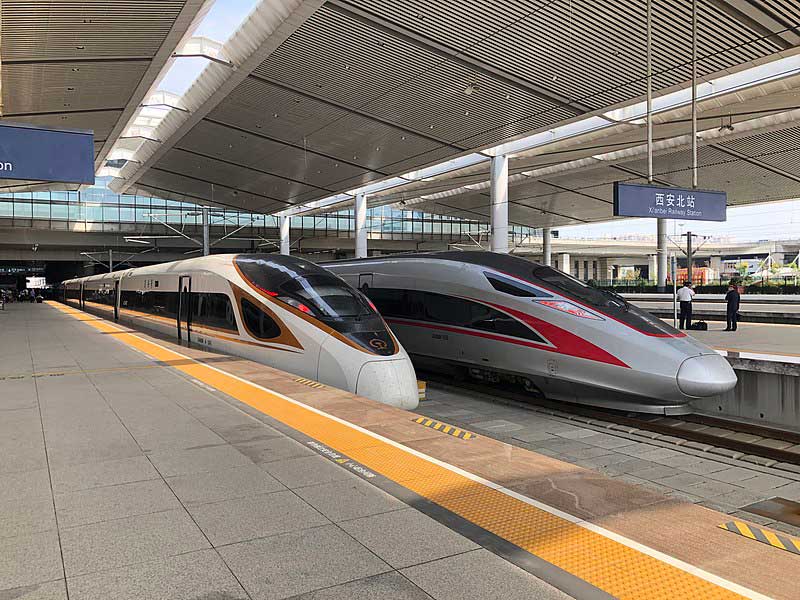Transportation is a critical component of our global society, enabling us to traverse vast distances for various purposes. Among the various modes of transportation, air travel stands out as the fastest, particularly for long distances.
In contrast to air transport, high-speed rail systems have gained prominence, especially in Asia and Europe, for shorter distances. These systems, including state-of-the-art bullet trains, can reach speeds of up to 200 miles per hour. They provide a fast, efficient, and environmentally friendlier alternative to air travel for intercity commutes.
These high-speed rail networks are a testament to the technological and infrastructural advancements in regions like Asia and Europe, showcasing their commitment to innovative and efficient passenger transportation.
The continuous evolution and improvement of these transportation modes play a crucial role in shaping our global connectivity and economic development.
The World’s Fastest Trains from China to Italy
Shanghai Maglev (China)

Shanghai Maglev
The Shanghai Maglev, holding the title of the fastest train in the world, operates in China and boasts an astonishing top speed of 460 km/h (286 mph). This marvel of modern engineering utilizes magnetic levitation technology, allowing it to float above the tracks and glide at high speeds with minimal friction.
Launched in 2004, the Shanghai Maglev was the first commercial high-speed maglev in the world, and it remains an iconic example of cutting-edge transportation technology. Covering the 30 km distance between Shanghai Pudong International Airport and the outskirts of central Pudong in just 7 minutes, it offers an unparalleled travel experience.
Despite its high operating costs and the limited scope of its route, the Shanghai Maglev remains a significant symbol of China’s commitment to advancing transportation technology.
CR Harmony & CR Fuxing (China)
China’s CR Harmony and CR Fuxing bullet trains, sharing the rank of the world’s second-fastest trains, impressively travel at speeds up to 350 km/h (217 mph). These trains are at the forefront of China’s high-speed rail revolution, seamlessly connecting major cities across the vast country.
CR Harmony and CR Fuxing exemplify China’s prowess in railway engineering, embodying efficiency and cutting-edge design. They feature state-of-the-art amenities and technology, ensuring a swift, comfortable, and reliable travel experience for passengers.
These high-speed trains have greatly reduced travel times between major urban centers in China, significantly enhancing connectivity and playing a pivotal role in the nation’s economic and infrastructural development.
Siemens Velaro E/AVs 103 (Spain)
The Siemens Velaro E/AVs 103, Spain’s pride in the realm of high-speed trains, stands as the third fastest globally, reaching speeds of up to 400 km/h (249 mph). This train is a testament to Spain’s commitment to innovative transportation solutions, offering a blend of exceptional speed, comfort, and efficiency.
The Velaro E/AVs 103 is a part of Spain’s renowned AVE (Alta Velocidad Española) high-speed rail service and has redefined travel in Europe. Its aerodynamic design and advanced technology not only ensure a smooth and rapid journey but also reflect the cutting-edge advancements in global rail transportation.
This train plays a crucial role in connecting major Spanish cities, significantly reducing travel times and contributing to the country’s robust transportation infrastructure.
CRH380A Hexie (China)

CRH380A Hexie
Introduced in 2010, the CRH380A is a symbol of China’s technological advancement in rail transport. It is based on foreign design principles, including those of the Shinkansen, and has been adapted to meet the unique requirements of China’s vast high-speed rail network.
The train features an aerodynamic design, advanced noise control technology, and a high-performance traction system. It is particularly noted for its energy-efficient regenerative braking system, which significantly enhances its environmental friendliness. The CRH380A Hexie has played a crucial role in connecting major Chinese cities, greatly reducing travel times and contributing to the nation’s economic growth.
CRH380B/BL Hexie (China)
The CRH380B/BL Hexie, ranking fifth among the world’s fastest trains, is an impressive representation of China’s advancement in high-speed rail technology. With a record speed of 303 mph (487.3 km/h) and a maximum operating speed of 236 mph (380 km/h), this train is a testament to China’s commitment to innovation in transportation.
Launched in 2011, the CRH380B/BL is an evolved version of the Siemens Velaro high-speed train. It showcases significant improvements over its predecessors, including increased operating speed, enhanced passenger comfort, and better energy efficiency. The train’s sleek design and advanced aerodynamics minimize air resistance, ensuring a smooth and swift journey.
Inside, passengers can enjoy improved damping performance, reduced cabin noise, and superior pressure control features. The CRH380B/BL Hexie is a key component of China’s extensive high-speed rail network, playing a vital role in bolstering connectivity and fostering economic development across the country.
CRH380D (China)

CRH380D
Introduced in 2012, the CRH380D represents a significant advancement in the CRH380 series, known for its superior performance and efficiency. The train’s aerodynamic design effectively reduces air resistance, enhancing its speed and energy efficiency.
It features a distributed traction system, where traction motors are spread throughout the train rather than concentrated in a locomotive. This innovation contributes to its remarkable speed capabilities.
Serving multiple high-speed rail lines, the CRH380D has been instrumental in shrinking travel times across China’s vast landscape, thereby playing a vital role in the nation’s rapid transit system and economic expansion.
Fuxing CR400AF/BF (China)

Fuxing CR400AF/BF
Launched in 2016, the Fuxing series, which includes the CR400AF and CR400BF variants, is recognized for its innovation and efficiency. The name ‘Fuxing’, meaning ‘rejuvenation’, aptly reflects the train’s role in modernizing China’s transportation infrastructure.
Each variant is uniquely nicknamed, with CR400AF known as the ‘Blue/Red Dolphin’ and CR400BF as the ‘Golden Phoenix’. These trains prioritize energy efficiency, feature a standardized part design, and incorporate enhanced safety features.
Capable of accommodating 556 passengers, the Fuxing CR400AF/BF trains offer amenities like Wi-Fi, marking a new era in comfortable and rapid rail travel in China.
Final Thoughts
The development of high-speed rail networks across the globe, particularly in countries like China and Italy, signifies a remarkable era in transportation. These advancements have revolutionized how we perceive distance and time, shrinking the world in unprecedented ways.
The emphasis on speed, coupled with advancements in technology and engineering, demonstrates a commitment to enhancing connectivity, reducing travel times, and promoting economic growth.
The evolution of high-speed trains is not just about achieving record-breaking speeds; it’s also about the integration of comfort, efficiency, and environmental sustainability.
